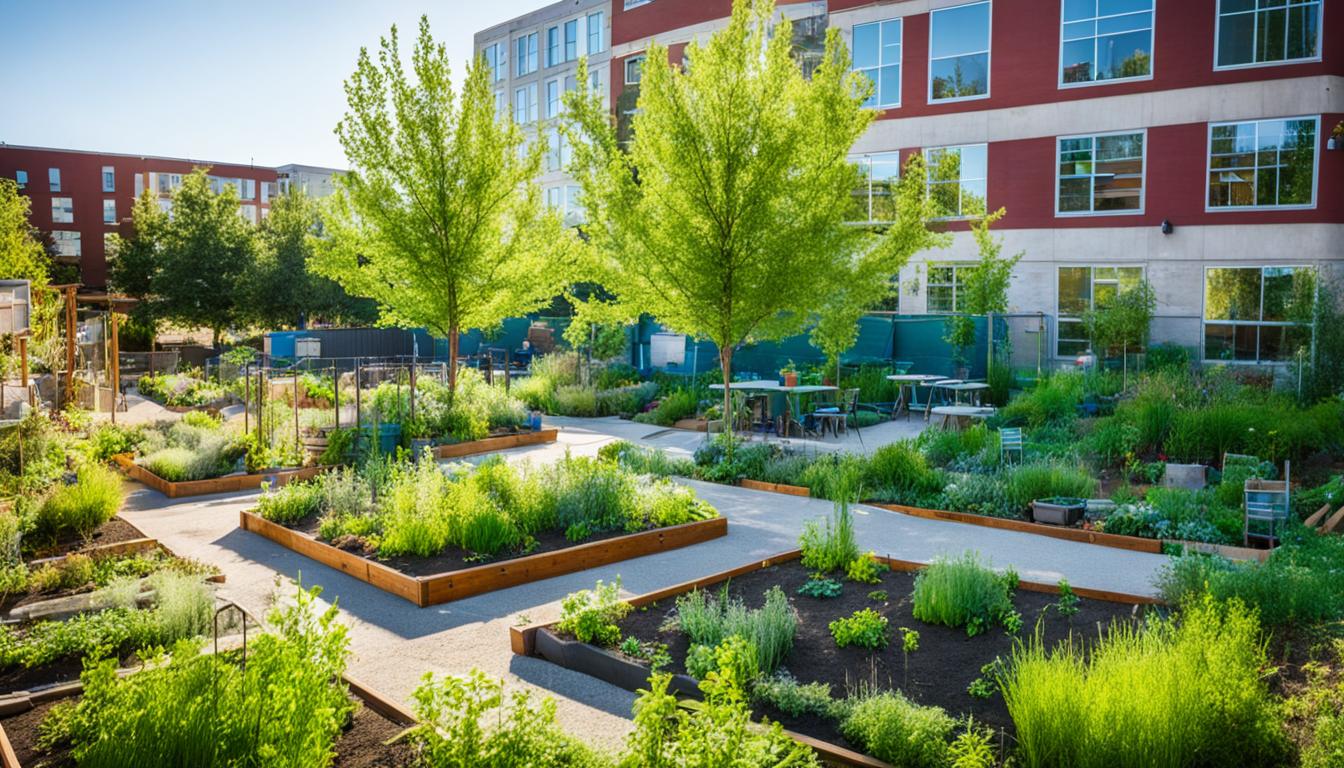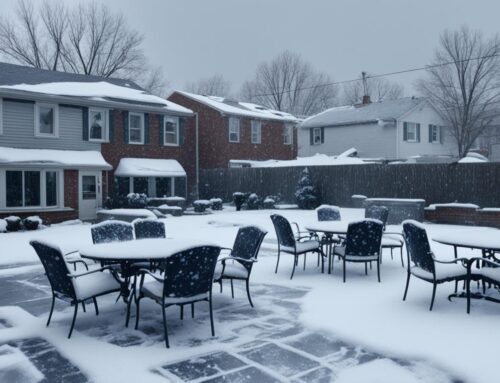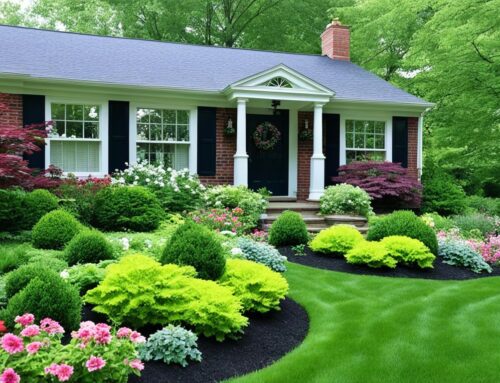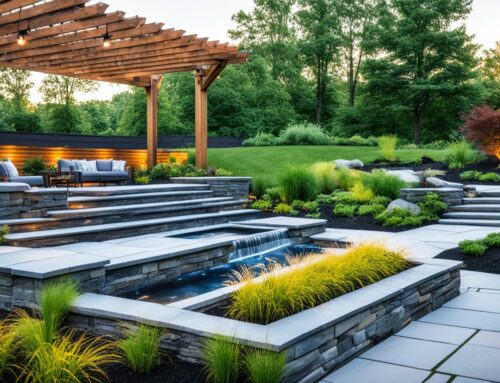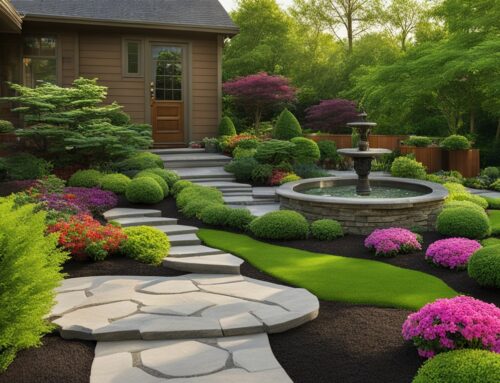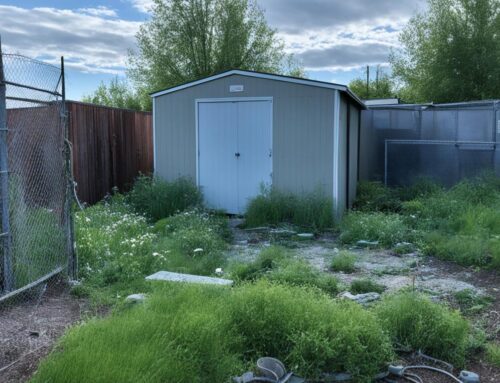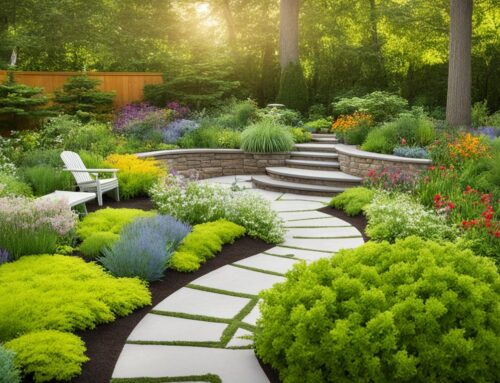Are you a Cleveland homeowner looking to enhance your outdoor living spaces? Have you ever wondered about the benefits of sustainable landscaping practices? Well, look no further because we have the answers for you!
In this article, we will explore the significance of sustainable landscape design in urban areas, with a specific focus on how Cleveland homeowners can benefit from implementing eco-friendly landscaping practices. We will discuss the importance of creating outdoor living spaces that are not only aesthetically pleasing but also environmentally responsible.
Key Takeaways:
- Sustainable landscaping practices can significantly benefit Cleveland homeowners and the environment.
- Creating eco-friendly outdoor living spaces involves careful consideration of plant selection and hardscape design.
- Landscape architecture plays a crucial role in transforming backyard spaces into sustainable havens.
- Implementing sustainable landscaping practices can enhance the quality of life for homeowners and conserve resources.
- Contact PurGreen Group for sustainable landscaping options and a free estimate.
Creating Eco-Friendly Outdoor Living Spaces through Landscape Design
In this section, we will delve into the various aspects of landscape design that contribute to creating eco-friendly outdoor living spaces. By incorporating sustainable practices into your garden design, you not only enhance the beauty of your outdoor space but also contribute to a healthier environment.
The Principles of Garden Design
When designing your garden, it is essential to consider the selection of plants that are native to your region. Native plants are well-adapted to the local climate, requiring less water and maintenance compared to exotic species. By choosing plants suited to your area, you can reduce water consumption and create a more ecologically balanced landscape.
Additionally, incorporating a diverse range of plant species in your garden promotes biodiversity, attracting beneficial wildlife such as pollinators and birds. This contributes to the overall health of your ecosystem and creates a vibrant and dynamic outdoor space.
The Importance of Hardscape Design
In sustainable landscape design, hardscaping elements play a crucial role in enhancing the functionality and beauty of outdoor spaces. Hardscape features such as walkways, patios, and retaining walls help define different areas within your garden while reducing the amount of turfgrass that requires regular maintenance and watering.
Using permeable paving materials for hardscaping not only adds visual interest but also allows rainwater to penetrate the soil, replenishing groundwater supplies. This helps mitigate stormwater runoff and reduces the strain on local water resources.
Furthermore, incorporating sustainable hardscape design elements such as rainwater harvesting systems and green roofs can provide additional environmental benefits. These features help manage water runoff, regulate temperature, and promote energy efficiency.
Choosing the Right Plants for Your Eco-Friendly Landscape
Plant selection is a critical aspect of creating an eco-friendly outdoor living space. Focus on choosing plants that are well-suited to your climate, soil type, and sun exposure. Native plants are often the best choice as they are adapted to the local conditions and require less water, fertilizer, and pesticide use.
Incorporating a mixture of trees, shrubs, and perennials creates layers within your garden, providing shade, habitat, and year-round interest. Consider including drought-tolerant plants that can withstand periods of dry weather and reduce the need for excessive watering.
By carefully selecting and placing plants in your landscape, you can create a harmonious and sustainable outdoor space that supports local ecosystems and minimizes environmental impact.
The Role of Landscape Architecture in Sustainable Design
In the realm of sustainable design, landscape architecture plays a crucial role in transforming ordinary backyard spaces into eco-friendly havens. Professional landscape architects possess the knowledge and expertise needed to implement innovative design techniques that prioritize sustainability while enhancing the aesthetic appeal of outdoor areas. Through their skillful guidance, Cleveland homeowners can achieve a harmonious balance between functionality, beauty, and environmental responsibility.
Backyard renovation is a key aspect of sustainable landscaping, and landscape architects excel in creating customized plans that align with homeowners’ unique preferences and needs. By carefully considering factors such as site conditions, microclimates, and local flora, these experts can optimize the use of natural resources, reduce water consumption, and minimize waste.
One essential element of landscape architecture is the selection of native plants which require minimal maintenance and thrive in the local climate. By incorporating these species into the design, homeowners can establish a self-sustaining ecosystem that attracts local wildlife and reduces the need for excessive irrigation, fertilization, and pesticides.
Additionally, landscape architecture encompasses the thoughtful integration of hardscaping elements into the overall design. This includes features such as paths, patios, and retaining walls, which not only enhance the usability of outdoor spaces but also contribute to sustainable practices. By using permeable materials and incorporating rainwater harvesting systems, landscape architects can minimize stormwater runoff and promote groundwater recharge.
Expert Insight:
“Landscape architecture provides a holistic approach to sustainable design, considering both the natural and built environment. By leveraging our knowledge of ecological principles, construction techniques, and design aesthetics, we can create sustainable outdoor spaces that not only benefit homeowners but also contribute to the larger ecosystem.”
Through collaboration with landscape architects, Cleveland homeowners have the opportunity to transform their backyard spaces into environmentally conscious retreats that offer both visual delight and functional practicality. With their expertise, these professionals can help individuals navigate the complexities of sustainable landscaping, providing tailored solutions that align with their vision.
By embracing landscape architecture and the principles of sustainable design, homeowners can take an active role in protecting the environment, conserving resources, and enhancing the overall quality of their outdoor living spaces. The incorporation of native plants, thoughtful hardscaping, and responsible water management not only benefits the immediate surroundings of their homes but also contributes to the larger goal of creating healthier, more sustainable communities.
Conclusion
In conclusion, implementing sustainable landscape design practices is essential for Cleveland homeowners who are looking to make a positive impact on the environment and enjoy the benefits of a well-maintained outdoor living space. By prioritizing eco-friendly landscaping, homeowners can create beautiful landscapes that not only require minimal maintenance but also contribute to conserving water and reducing their ecological footprint.
At PurGreen Group, we understand the importance of sustainable landscaping and its many advantages. Our team of experienced professionals is dedicated to providing top-notch landscaping services that go beyond traditional landscape maintenance. We offer a comprehensive range of sustainable landscaping services, including native plant selection, irrigation system installation, and eco-friendly lawn care solutions.
If you’re ready to transform your outdoor space into an eco-friendly haven, we invite you to contact us today at (440) 256-1800 for a free landscaping estimate. Our knowledgeable team will work closely with you to create a customized landscape design that not only enhances the beauty of your property but also aligns with your sustainable goals.

